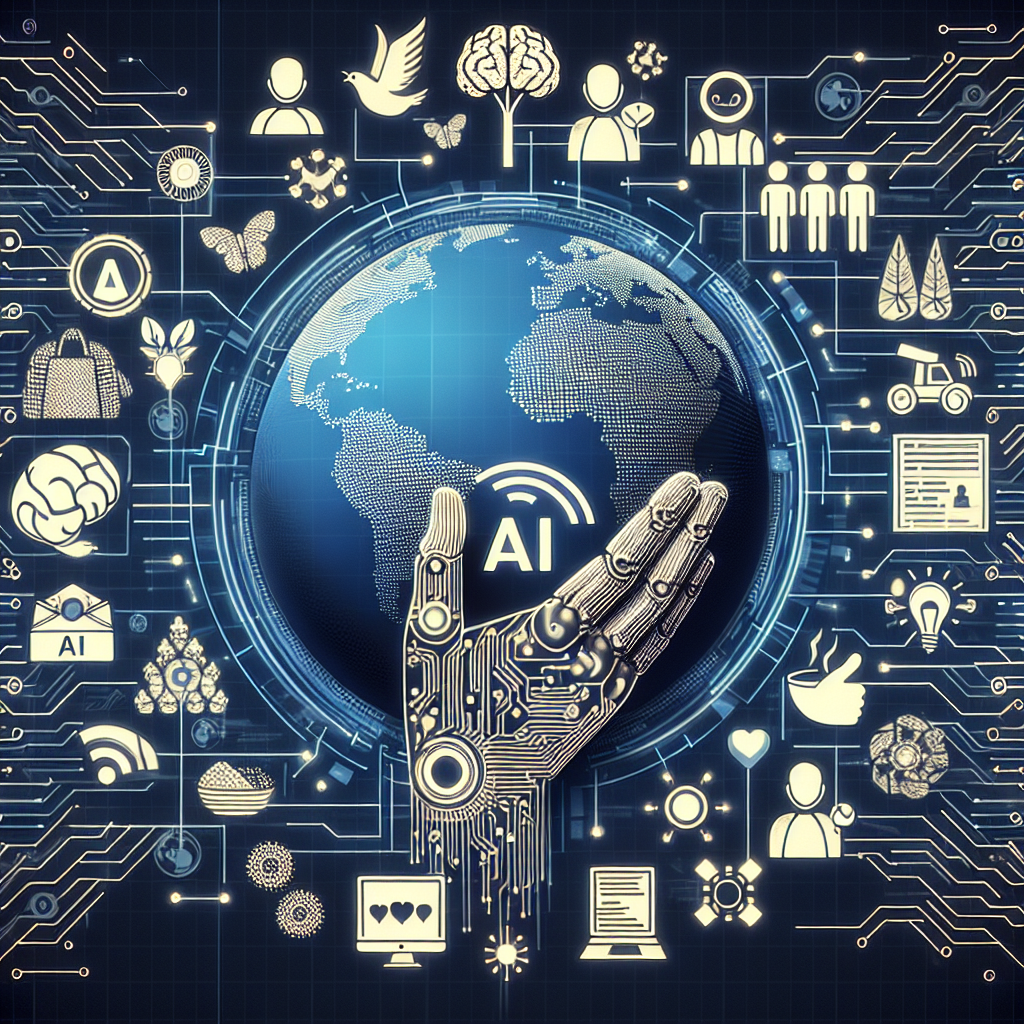Artificial Intelligence (AI) software has the potential to revolutionize how humanitarian aid is delivered to those in need around the world. From improving efficiency in disaster response to providing more accurate data for decision-making, AI technology is making a significant impact in the humanitarian sector. In this article, we will explore the various ways in which AI software is transforming humanitarian aid and address some common questions about its use in this field.
One of the key ways in which AI software is benefiting humanitarian aid efforts is through improved data analysis and decision-making. AI algorithms can process vast amounts of data in a fraction of the time it would take a human, allowing aid organizations to quickly identify areas of need and allocate resources accordingly. This is particularly crucial in emergency situations such as natural disasters or conflicts, where timely and accurate information can mean the difference between life and death for those affected.
For example, AI-powered drones equipped with cameras and sensors can be used to survey disaster-stricken areas and quickly assess the extent of damage. These drones can also be used to deliver aid supplies to remote or inaccessible areas, reducing the risk to humanitarian workers and speeding up the distribution process. In addition, AI algorithms can analyze satellite imagery to track the movement of displaced populations and predict potential areas of conflict, allowing aid organizations to plan their response more effectively.
Another important application of AI software in humanitarian aid is in the field of healthcare. AI-powered tools can help medical professionals diagnose diseases more accurately and develop treatment plans tailored to the needs of individual patients. For example, AI algorithms can analyze medical images such as X-rays or MRIs to detect signs of disease or injury that may be missed by human eyes. This can be particularly useful in resource-poor settings where access to trained medical professionals is limited.
AI software is also being used to improve coordination and communication among aid organizations and with local communities. For example, chatbots powered by AI can be used to provide information and support to refugees or displaced populations, helping them access essential services and navigate complex bureaucratic processes. AI algorithms can also analyze social media and other sources of data to monitor public sentiment and identify emerging needs or concerns within communities.
Despite its many benefits, the use of AI software in humanitarian aid is not without challenges. One of the main concerns is the potential for bias in AI algorithms, which can lead to unfair or discriminatory outcomes. For example, if an AI algorithm is trained on data that is skewed or incomplete, it may produce results that are biased against certain groups or populations. To address this issue, aid organizations must ensure that their AI systems are developed and tested using diverse and representative data sets, and that they are regularly audited for fairness and transparency.
Another concern is the ethical implications of using AI technology in humanitarian settings. For example, there may be concerns about privacy and data security when collecting and analyzing sensitive information about vulnerable populations. Aid organizations must ensure that they have robust data protection policies in place and that they are transparent about how they collect, store, and use data obtained through AI software.
In conclusion, AI software has the potential to greatly enhance the effectiveness and efficiency of humanitarian aid efforts around the world. From improving data analysis and decision-making to enhancing healthcare services and communication, AI technology is transforming the way aid organizations deliver assistance to those in need. However, it is important for aid organizations to address the challenges and ethical considerations associated with using AI software in humanitarian settings, in order to ensure that the benefits of this technology are realized for all.
FAQs:
Q: How is AI software being used in disaster response?
A: AI software is being used in disaster response to analyze data from various sources, such as satellite imagery and social media, to identify areas of need and allocate resources more effectively. AI-powered drones are also being used to survey disaster-stricken areas and deliver aid supplies to remote or inaccessible areas.
Q: How can AI software improve healthcare services in humanitarian settings?
A: AI software can help medical professionals diagnose diseases more accurately and develop tailored treatment plans for individual patients. For example, AI algorithms can analyze medical images to detect signs of disease or injury that may be missed by human eyes, particularly in resource-poor settings where access to trained medical professionals is limited.
Q: What are some of the ethical concerns associated with using AI software in humanitarian aid?
A: Some of the ethical concerns associated with using AI software in humanitarian aid include bias in AI algorithms, privacy and data security issues, and concerns about transparency and accountability. Aid organizations must ensure that their AI systems are developed and tested using diverse and representative data sets, and that they have robust data protection policies in place.
Q: How can aid organizations ensure that their AI systems are fair and unbiased?
A: Aid organizations can ensure that their AI systems are fair and unbiased by using diverse and representative data sets to train their algorithms, regularly auditing their AI systems for fairness and transparency, and being transparent about how they collect, store, and use data obtained through AI software.

